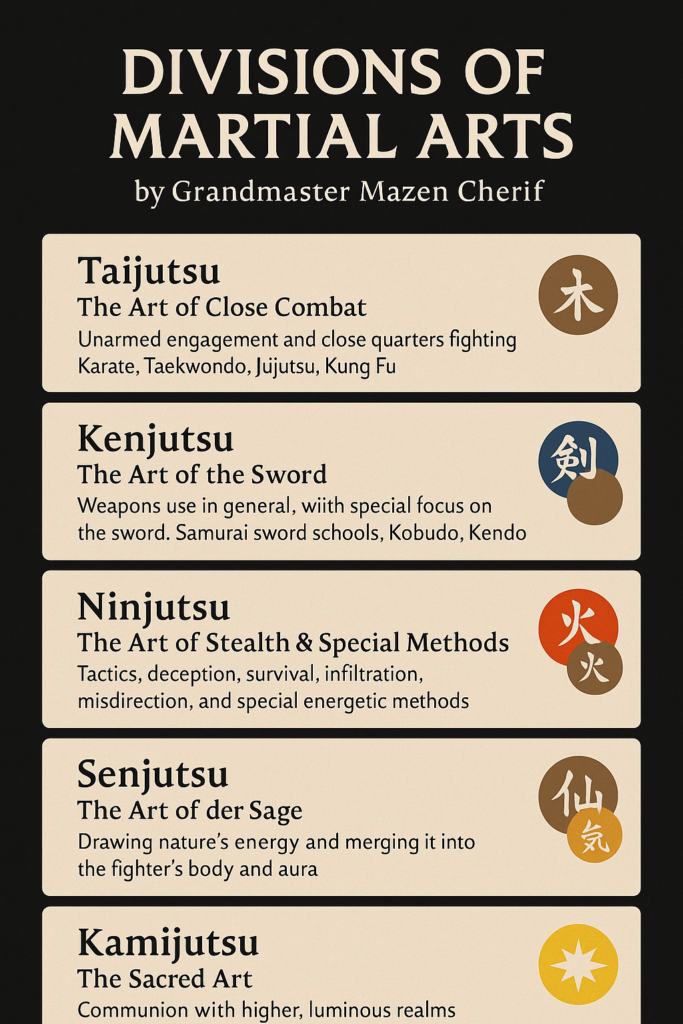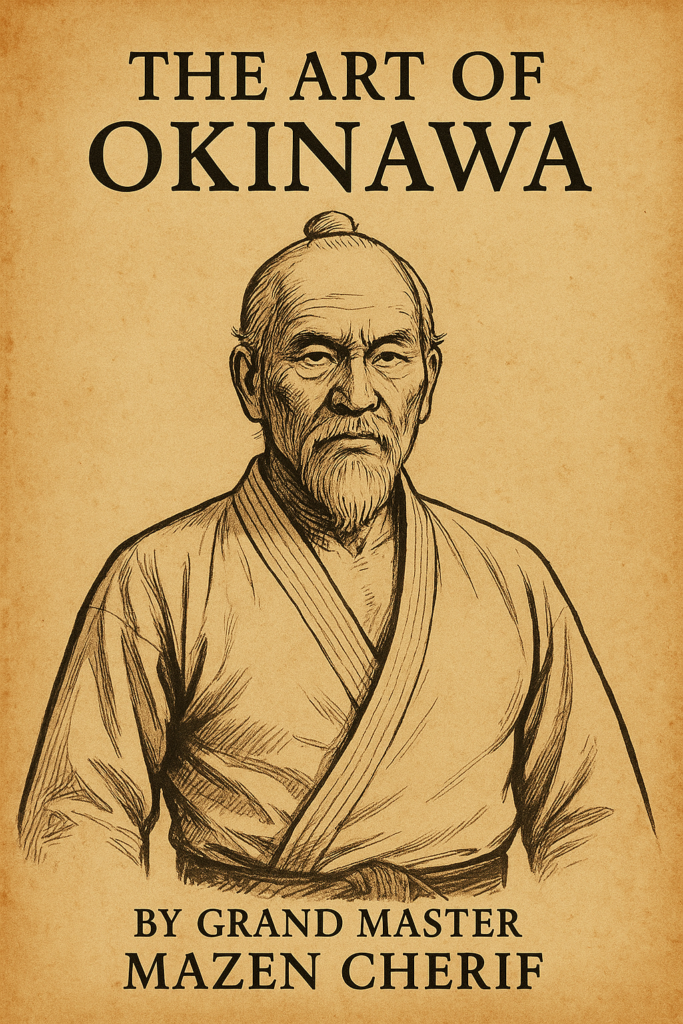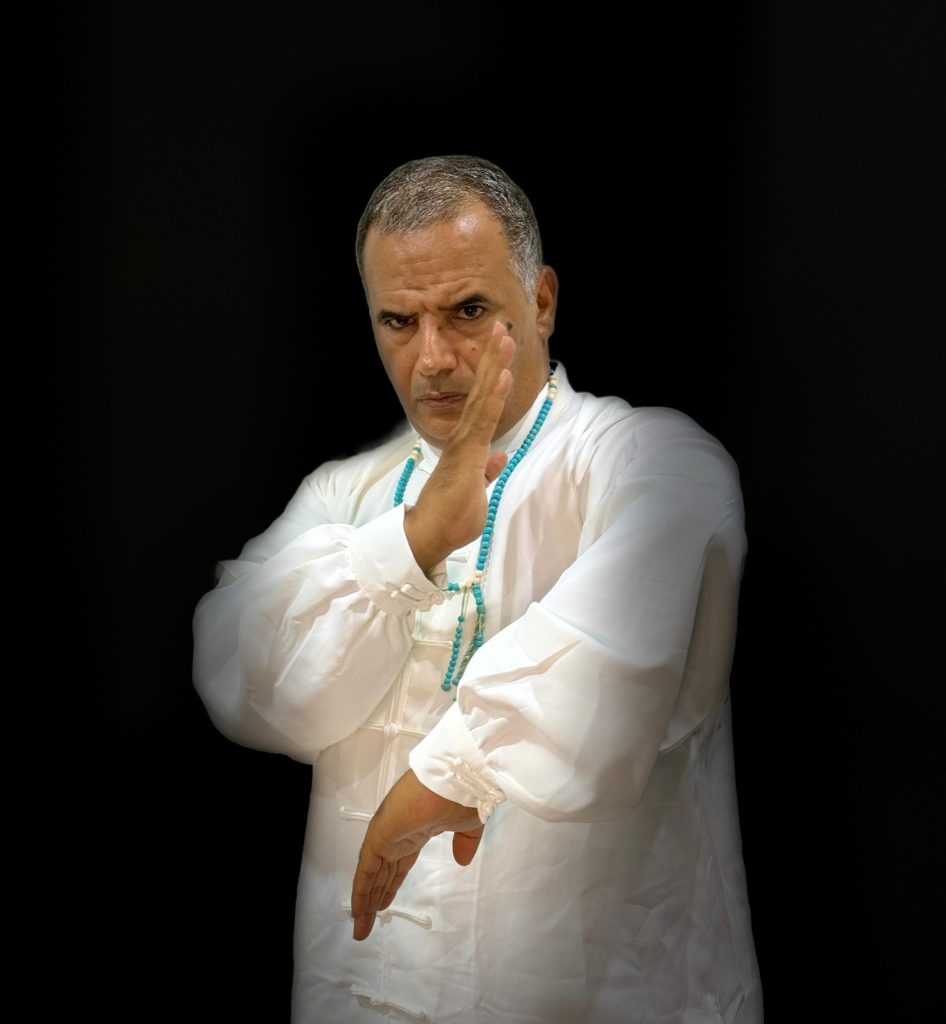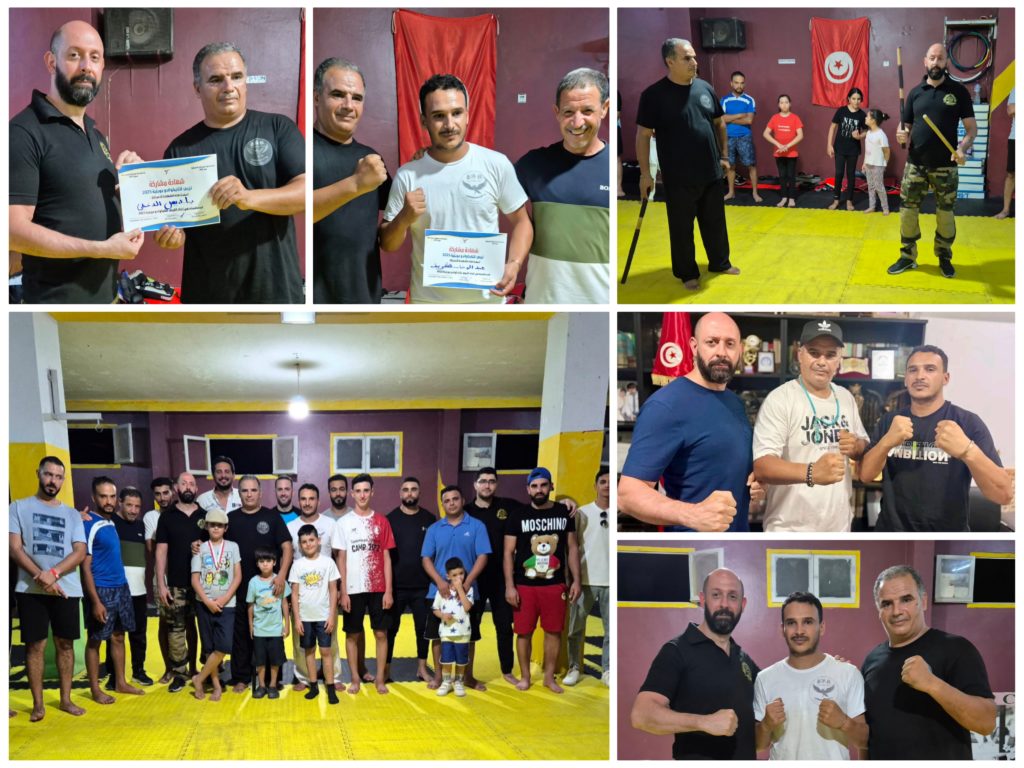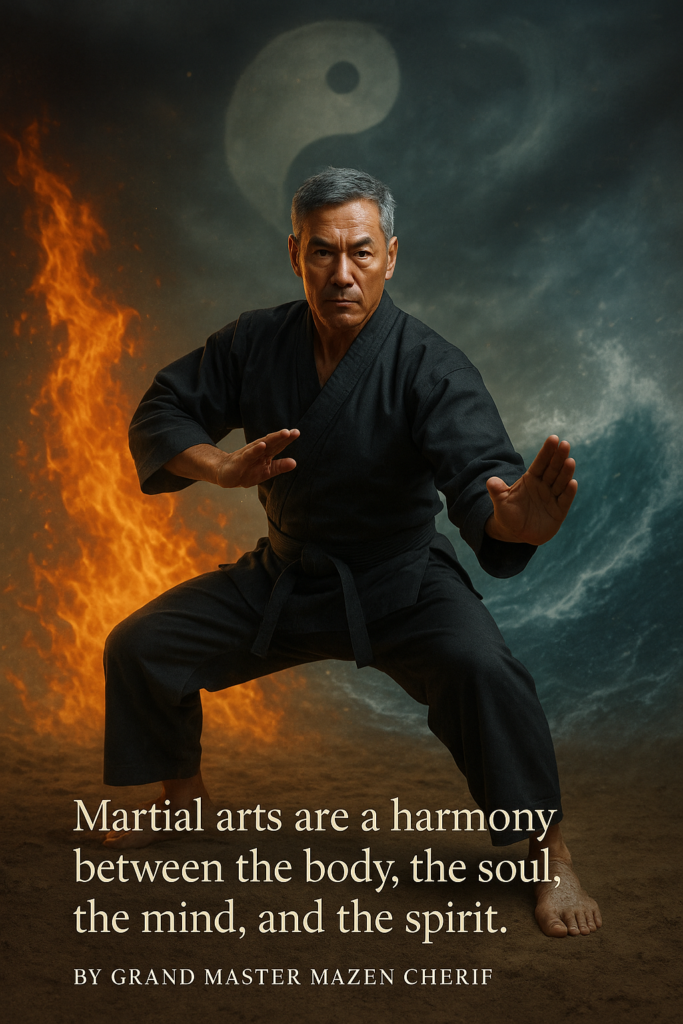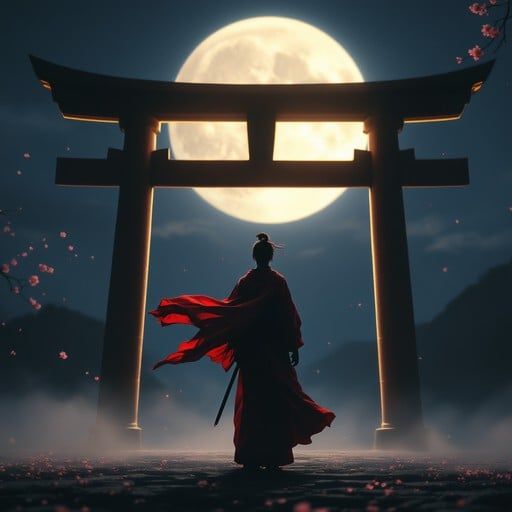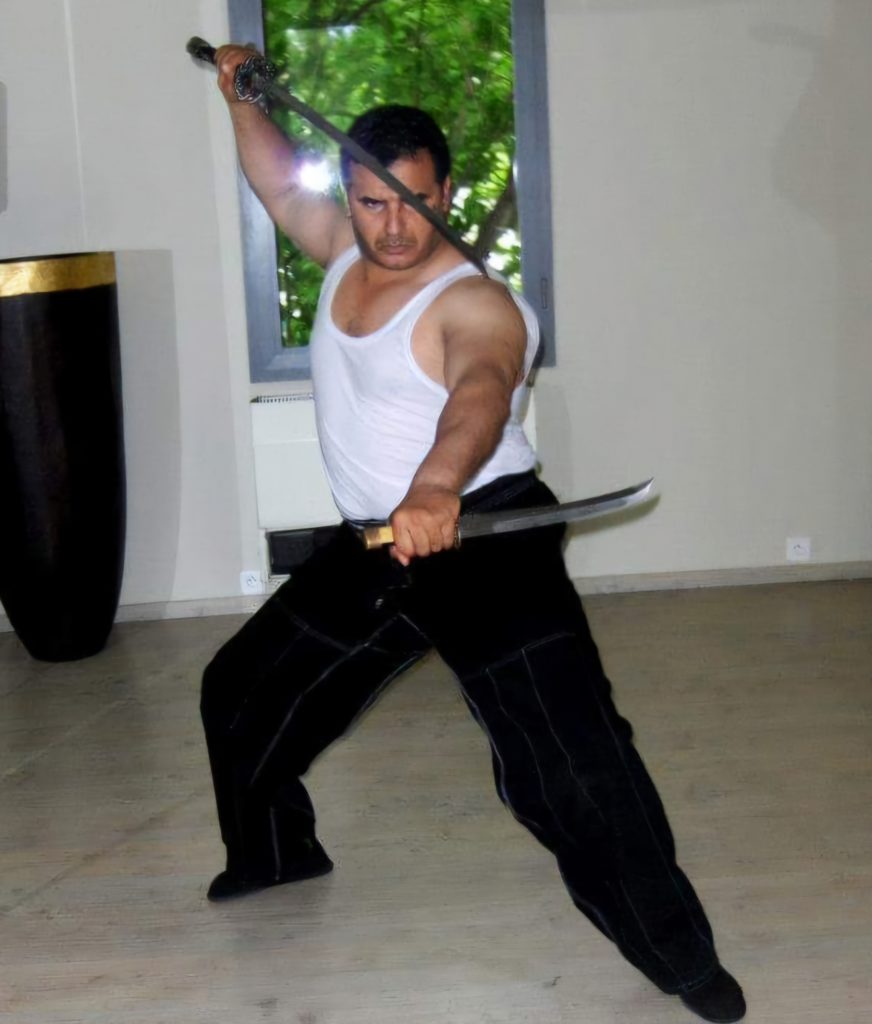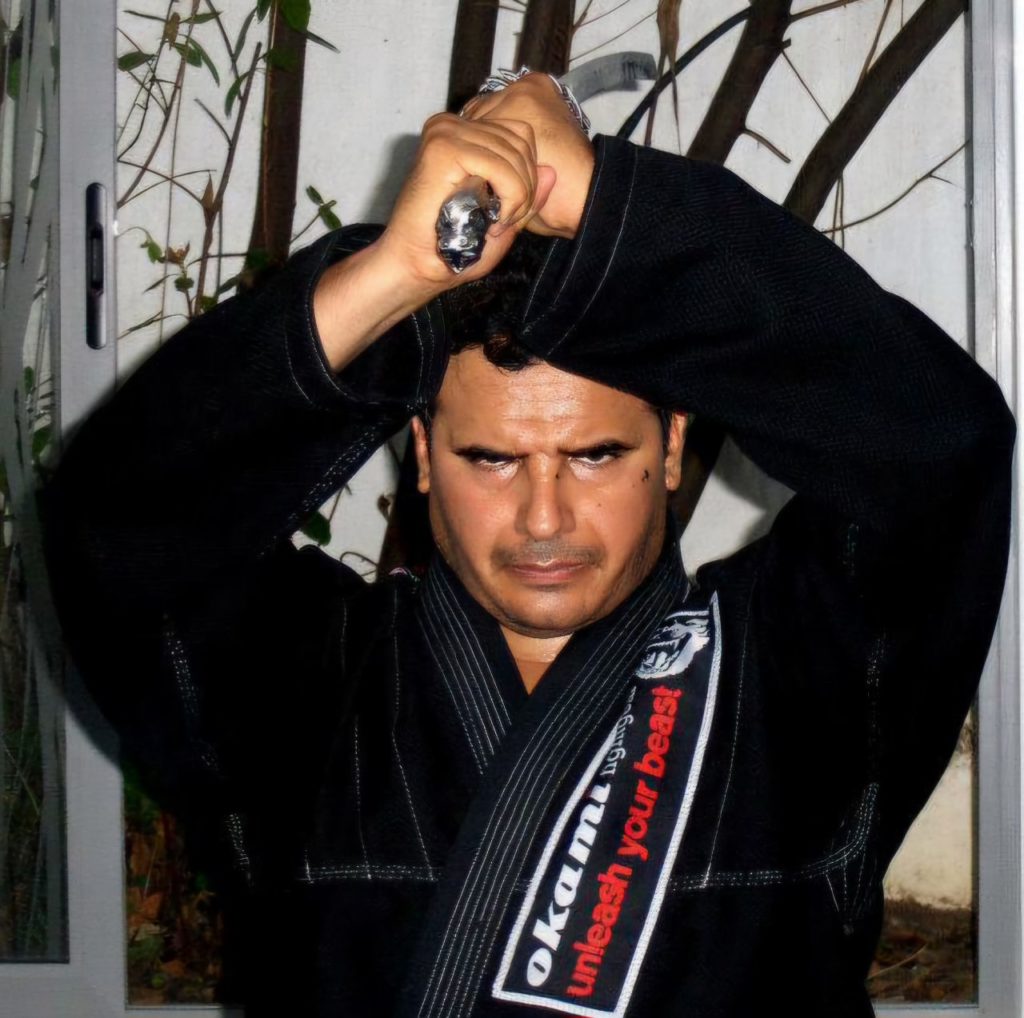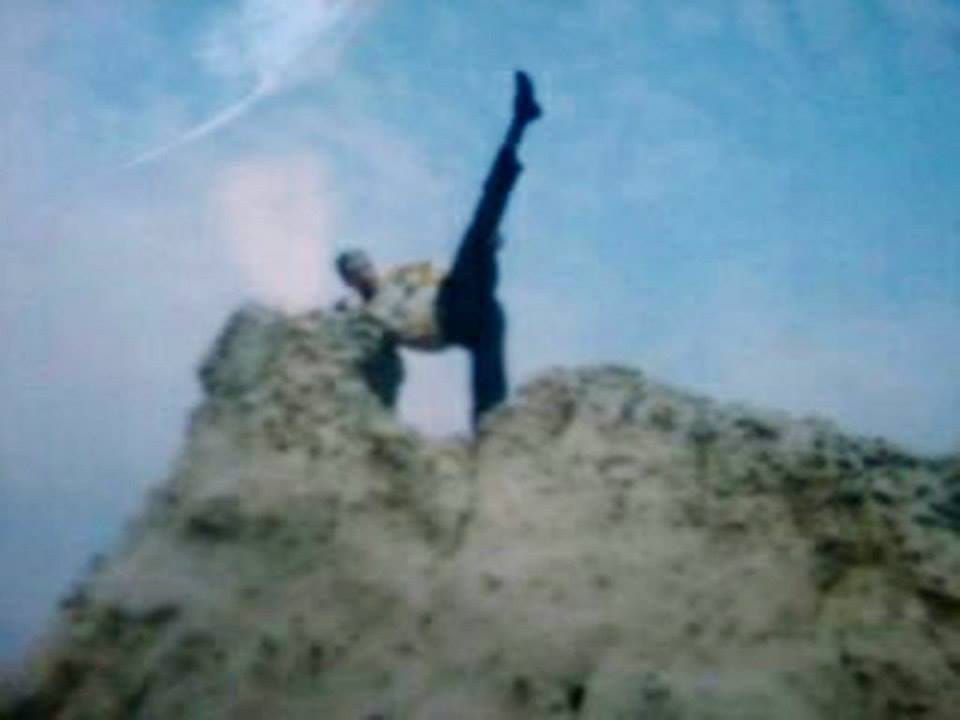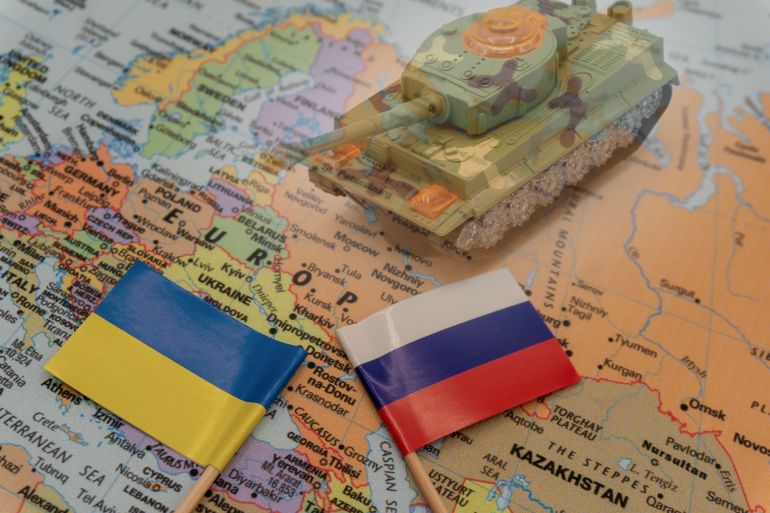أقسام فنون الدفاع
3 دقائق للقراءة
تنتشر في العالم اليوم فنون دفاعية كثيرة، مدارس عديدة وأساليب مختلفة.
لكنها في نظري تنقسم إلى:
١/ تايجتسو Taijutsu فن الالتحام والقتال القريب Close Combat.
ضمنه فنون كثيرة مثل الكاراتي، التايكواندو، الجوجتسو، الكونغ فو…
يقوم على قوة القبضة والساق، النجاعة القصوى، عنصر التراب بشكل خاص. أعلاه فن قتال الطيف.
٢/ كنجتسو Kenjutsu فن استخدام الأسلحة عموما، السيف بصفة خاصة، وضمنه فنون الساموراي والكوبودو والكندو وفن سيف وودنغ. أعلاها فن سيف الشمس وضمنه فن موساشي.
طاقته الغالبة التراب والماء.
٣/ ننجتسو Ninjutsu وهو فن فيه تكتيكات مختلفة، خدع بصرية، استخدام الختمات والطاقات الخاصة. أعلاه فن الننبو. Ninpu Ninjutsu.
برع فيه مقاتلوا الكوجا والإيجا، لكن وجوده أقدم من ذلك، ويرتبط جانب منه بالسحر الأسود، واستخدام أسرار العوالم الخفية، وفيه فنون ظلامية وأخرى نورانية. طاقته الغالبة النار والهواء.
٤/ سنجتسو Senjutsu او فن المعلم. يستعمل طاقة الطبيعة ويدمجها في جسد المقاتل. تمكن قلة من المعلمين من استخدامه مثل الجنرال يوفاي ووصل الى مستوى مهم فيه كل من تاكيدا وتلميذه يوشيبا مؤسس الايكيدو، وأوياما مؤسس الكيوكوشين.
فن قوي ويحتاج فتح التشاكرات معا ووصل الهالة بطاقة الطبيعة والكون.
طاقته الغالبة التراب والهواء.
٥/ كاميجتسو Kamijutsu فن الروحانيات العليا، أو الفن المقدس. كلمة كامي Kami تعني المقدس.
فن نخبة النخبة. يستخدم التواصل مع الطاقات العليا والعوالم النورانية. يتم دمج كل العناصر في عنصر النور، أو العنصر الأسمى، فتتضاعف قوة تلك العناصر، ويتم تفعيل جميع التشاكرات في وقت واحد. قوته تدميرية رهيبة. استخدمه قلة من البشر مثل بوذا وبنسبة أقل تابعه بوديدهارما.
*هذا تقسيم ذاتي يرتبط بدراستي الطويلة لهذه الفنون وممارستها بشكل متعمق.
*كل عنصر ذكرته أعنيه بدقة، وذكر بعض المدارس والمعلمين مقصود أيضا.
*سيتم التفصيل لاحقا.
*السحر أمر حقيقي، ووجود طاقات خفية وتداخل بين العوالم أمر موجود في فلسفات فنون الدفاع، وثبت لي بالتجربة أنه صحيح. ولكن الأمر يحتاج سعة فهم.
وللكلام بقية.
Divisions of Martial Arts — by Grandmaster Mazen Cherif
1) Taijutsu (体術) — The Art of Close Combat
Scope: Unarmed engagement and close-quarters fighting.
Includes: Karate (空手道), Taekwondo, Jūjutsu (柔術), Kung Fu (功夫), etc.
Core mechanics: Powerful fists and legs, maximum efficiency at close range, direct lines, decisive finishes.
Predominant element: Earth (stability, structure).
Pinnacle (in this framework): Spectral Combat — a higher mode of body-to-body fighting beyond ordinary perception.
2) Kenjutsu (剣術) — The Art of the Sword (and Weapons)
Scope: Weapons use in general, with special focus on the sword.
Includes: Samurai sword schools, Kobudō (古武道), Kendō (剣道), Wudang sword art.
Core mechanics: Cutting mechanics and edge alignment, maai (間合い, distance), timing, fluid footwork, guard transitions.
Predominant elements: Earth & Water (grounded structure with flowing adaptability).
Pinnacle: Sun Sword (Taiyō no Ken) — encompassing the spirit of Musashi’s approach within this system.
3) Ninjutsu (忍術) — The Art of Stealth & Special Methods
Scope: Tactics, deception, survival, infiltration, misdirection, and special energetic methods.
Methods: Visual/psychological illusions, use of Kuji-in seals (九字印), specialized energies and fieldcraft.
Historical lines noted: Kōga (甲賀) and Iga (伊賀).
Predominant elements: Fire & Air (speed, volatility, evasion).
Pinnacle: Ninpu Ninjutsu — the highest tier of wind-like stealth and esoteric methods in this framework.
Note (per author’s view): Includes “dark” and “luminous” branches, touching occult knowledge and unseen realms.
4) Senjutsu (仙術) — The Art of the Sage (Natural-Energy Integration)
(Not to be confused with 戦術 “strategy” — here it’s 仙術 “sage arts.”)
Scope: Drawing nature’s energy and merging it into the fighter’s body and aura.
Requirements: Opening the chakras, harmonizing the aura with nature and the cosmos.
Methods: Breath and ki/qi cultivation, rooted stances, energetic alignment, whole-body integration.
Predominant elements: Earth & Air (rooted presence with expansive flow).
Masters referenced (per essay): General Yue Fei, Takeda (Daitō-ryū line), Ueshiba (Aikidō founder), Ōyama (Kyokushin founder) reached meaningful levels of this art.
5) Kamijutsu (神術) — The Sacred Art (Higher Spirituality)
Scope: Elite-of-the-elite spiritual combat; communion with higher, luminous realms.
Essence: All elements are unified into Light (the supreme element); all chakras are activated simultaneously, multiplying force.
Character: Overwhelming, transformative power; “holy” or consecrated practice.
Exemplars (per essay): Buddha, and to a lesser extent Bodhidharma.
Notes
This is a personal, experiential taxonomy derived from long study and deep practice (as stated in the article).
The elemental correspondences and pinnacle forms are part of the author’s philosophical-energetic system and will be detailed later.
